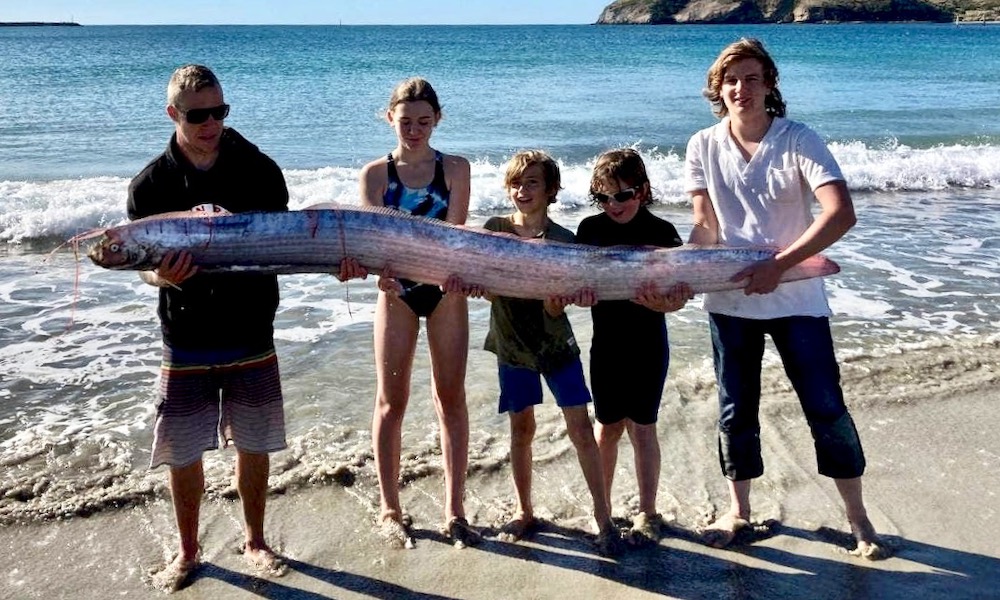A whale researcher in British Columbia, Canada, last week experienced a “once-in-a-lifetime” encounter with a rare and enormous sunfish that he spotted from his home.
Jared Towers, who lives on Cormorant Island, waded into the water with what was later identified as a hoodwinker sunfish swimming just yards from shore.
“I can’t believe this just happened!” Towers wrote Oct. 25 on Facebook. “I’ve seen many sunfish (Mola) offshore over the years but never so close to home or this close up. Also, it turns out this is a Hoodwinker Sunfish (Mola tecta), a species only recently discovered.”
The hoodwinker sunfish was first identified as a species in 2017. They were subsequently believed to inhabit only subtropical and temperate waters in the Southern Hemisphere.
In 2019, however, a hoodwinker sunfish washed ashore near Santa Barbara, marking the first documentation of the species in the Northern Hemisphere.
RELATED: ‘Stunned’ researchers rescue 4,000-pound sunfish from net
Towers told the Times Colonist that after spotting the sunfish he waded out to spend several “surreal” minutes with a gentle giant that weighed perhaps 400 pounds, measuring 7 feet wide and 10 feet across.
“It had these big beautiful eyes and it was looking me over up and down,” Towers said. “I’m used to having large mammals watching and having this inquisitiveness, but I never expected this out of a fish processing information about me.”
The most prevalent sunfish in the Northern Hemisphere is the Mola mola, which can weigh more than 5,000 pounds.
Alien-like in appearance, with truncated bodies, small mouths and large eyes, ocean sunfish are docile creatures that prey on sea jellies, squid, and other gelatinous zooplankton.
The sunfish encountered by Towers – it eventually swam away – was identified as a hoodwinker sunfish by Jackie Hindering of the Marine Education and Research Society in Port McNeill on Vancouver Island.
She told the Times Colonist that warming waters might in the Pacific be responsible for more sunfish appearing off British Columbia.
Hoodwinker sunfish might easily be misidentified as Mola molas. But they boast subtly different features, including a rounder head shape and smaller tail size.




















